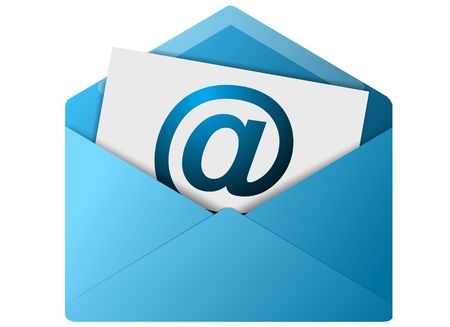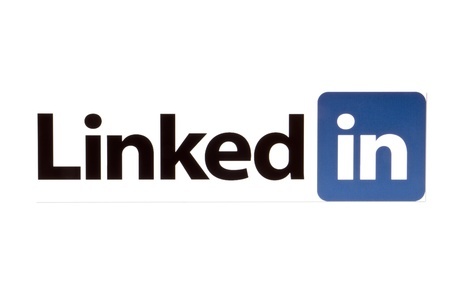5 Reasons Why You Didn’t Get The Job
Even if we don’t want the job, most of us want to get the offer. When you actually do want the job, getting a “pass” can be downright devastating. I’ve been there too.
Sometimes knowing the reason, you weren’t hired is easy. Maybe you didn’t have most of the “requirements” but you decided to apply anyway. Perhaps you didn’t click with the hiring manager. As soon as you left the interview your gut told you that you wouldn’t be moving forward.
Other times, you leave an interview feeling great and are stunned to receive a “we went another way” letter in the mail. You go over every interaction over and over trying to figure out what went wrong.
How To Create Stories That Sell You To Employers
Most of the resumes I see focus on what people do on a daily basis. The result is a boring list of duties and responsibilities that’s unlikely to inspire anyone to call them. Employers want to know what you can do for them.
The best way to show your value is to focus on what you’ve done for your current and previous employers. The impact you’ve made. The same is true for interviews. Employers don’t want to hear about what you do every day. They want to hear about your achievements in terms of the impact you’ve made.
Prepare for your interviews with stories that illustrate your value. Like all stories, there should be a beginning, a middle, and an end.
How To Establish Yourself As A Thought Leader
A tight job market means tougher competition. People who hadn’t considered moving a couple of years ago are passively looking. Those casually looking have transitioned from passive to active job seekers.
Today, standing out from your competition is essential.
If you’re a senior executive or pursing those roles, one of the best strategies is to have others see you as an authority in your industry, a thought leader.
One way to be recognized as a thought leader is to share knowledge with your community.
Don’t Rely On Job Boards To Find A Job (Do This Instead)
Job boards are not the holy grail. Yes, applying online should be part of your job search strategy. The operative word being “part.”
One of the biggest mistakes job seekers make is relying on online job postings to find a job.
It’s easy to fall into the trap of spending your day at the computer responding to job postings. It doesn’t take a lot of effort. You can do it at home wearing sweat pants and a t-shirt while watching TV.
At the end of the day, knowing you’ve applied to 30 jobs, gives you a sense of accomplishment. But, it’s a false sense of accomplishment.
The truth is, focusing on job boards isn’t the best use of your time.
It’s more effective to take a strategic, multipronged approach.
Target Employers
At the beginning of your job search make a list of 10 or so companies you’d like to work for. These are your Target Employers. Contact people in your network to see who can connect you with someone who works there. If the employee you connect with can get your resume in front of the hiring manager for your target position even better.
Set up Google alerts for each employer, that way you’ll be notified whenever they are in the news. Review the career section or job postings on their corporate websites, at least once a week.
As a former recruiter, I can say that almost every job I was trying to fill was listed on the company’s site. The only exceptions were “confidential” searches, generally when someone didn’t know they were being replaced.
How To Write A Compelling Cover Letter – And Why You Need One
Today, there’s a lot of debate as to whether it’s worth it to submit a cover letter with your resume. Some recruiters and hiring managers say they never read cover letters. Others say a candidate’s cover letter can mean the difference between being contacted for an interview and not.
So when you submit your resume sending a cover letter may or may not make a difference.
But in a competitive job market do you really want to take a chance?
Probably not.
Recruiters who say they never read cover letters say that a good resume should stand on its own. That a cover letter is redundant. However, a compelling cover letter can convince recruiters who do read them that you are a viable candidate.
How To Get A Response To Your Email
There are mixed opinions about cover letters. Some recruiters say a solid cover letter can move them to contact a candidate. Others say they never read cover letters.
Since you don’t know what a recruiter might do, the best bet is to always send one.
Thank you notes are different. The majority (80%) of hiring managers say a candidate’s thank you note is helpful with 22% saying very helpful and 58% saying somewhat helpful according to a 2017 survey by Accountemps.
So, it seems that sending thank you notes is a must. Despite that HR managers report that only 24% of candidates send them.
Just as with a resume, content is KING in your cover letters and thank you notes. You need to demonstrate your value as it relates to the employer. In essence, what you can do for them.
But it’s important to pay attention to the little things too.
3 Executive Resume Must Haves
To be effective an executive resume needs to convey value. Right away. Early in your career you may have been able to get by with a basic employment history. However, once you reach the executive level, or are targeting those rolls, demonstrating the impact you’ve had on your employers is critical.
Unfortunately, most of the resumes that come across the desks of recruiters and hiring managers are boring lists of duties and responsibilities. Nothing to motivate the reader to set up an interview.
The good news, is that if your executive resume does demonstrate value and engage the reader you will stand out from the pile of other candidates. In a good way.
3 Things Your Resume Must Include
Quantifiable Results
Employers expect senior professionals to do more than manage a team, run a department, or be responsible for a sales region. They want to know what you’ve done that’s had an impact on the business.
The best way to demonstrate value is show how you’ve made money, saved money, saved time, anything that’s had a positive effect. While quantifying results may be easier in some professions, like sales, if you take the time to “dig deep” you can come up with results.
How To Use LinkedIn To Increase Your Opportunities
Whether you’re actively looking for a new job or just want to keep your options open, LinkedIn has a lot to offer. Of course, you need to have a robust LinkedIn profile. Today, LinkedIn is like Google for people, without an optimized profile it’s unlikely you’ll be seen in a recruiter’s search.
But creating a compelling LinkedIn profile is only the beginning. Over the last few years, LinkedIn has added several functions that can help you move forward in your job search.
Here are 4 ways to up your chances of finding a job through LinkedIn.
Tell Recruiters Your Looking
If you’re actively looking or even open to new opportunities, LinkedIn lets you tell recruiters you’re looking for free. It only takes a few minutes to go into your Settings & Privacy and set up your Job Seeking Preferences.
Once you click on Manage Job Alerts, LinkedIn allows you to edit your Career Interests. In Career Interests, you’ll have the opportunity to select Job titles you’re considering, types of jobs you’re open to, the size of the company you’d like to work for, and more. LinkedIn notes that while they can’t guarantee your employer won’t find out, they “take steps to keep Recruiter users who work at your company, as well as related companies, from seeing the career interests that you share.”
Tell Recruiters You’re Looking (Without Your Boss Finding Out)
While being employed makes you more appealing to employers, looking for a new job while working full-time can be challenging. Perhaps the biggest challenge is keeping your job search a secret from your boss.
There’s a new LinkedIn program that can help with that.
LinkedIn recently introduced a new program for job seekers that makes looking for a job on LinkedIn easier. With this new program, you can alert recruiters that you’re open to new opportunities without broadcasting it to the world.
This new program takes only a few minutes to set up on your LinkedIn account.
The bonus is it’s free.
To begin go to Settings & Privacy, scroll down to Job Seeking Preferences, and turn on Let recruiters know you’re open to opportunities.
What To Do When You Don’t Get The Job
It’s always disappointing when you don’t get the job. It can be devastating when it was your “dream job” and you were one of the final two.
But, the fact is that there are at dozens of people applying for every position and only one of them gets hired.
If you’re not the one hired it’s OK to be upset. It’s OK to get angry. It’s even OK to cry if you want to. I’ve cried after finding out I came in number 2.
Give yourself permission and time to grieve. Then move forward. Here are a few steps to take.










